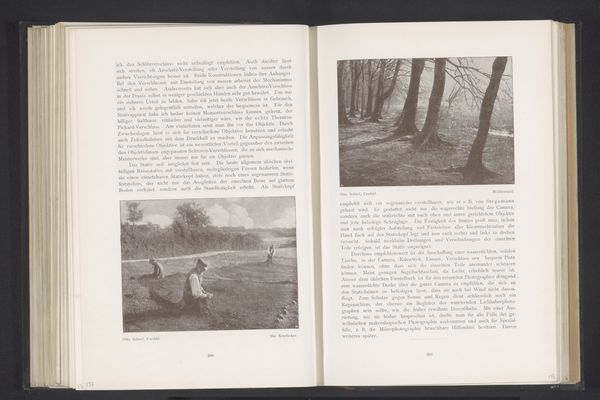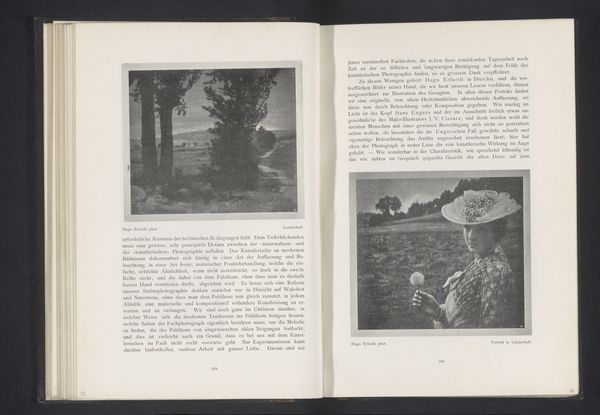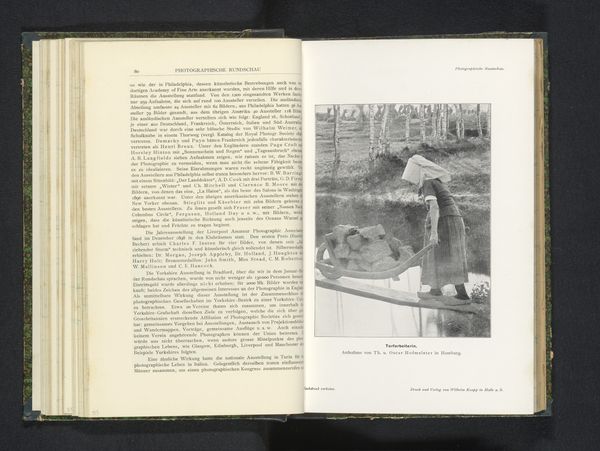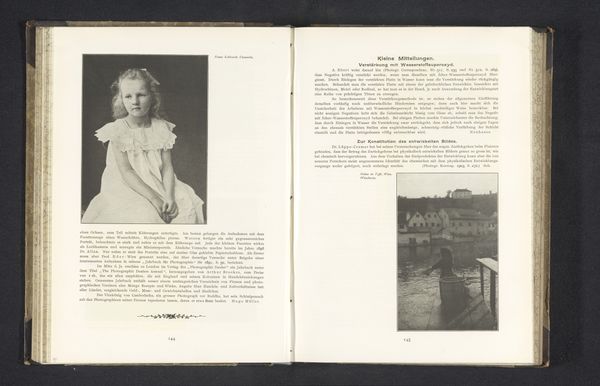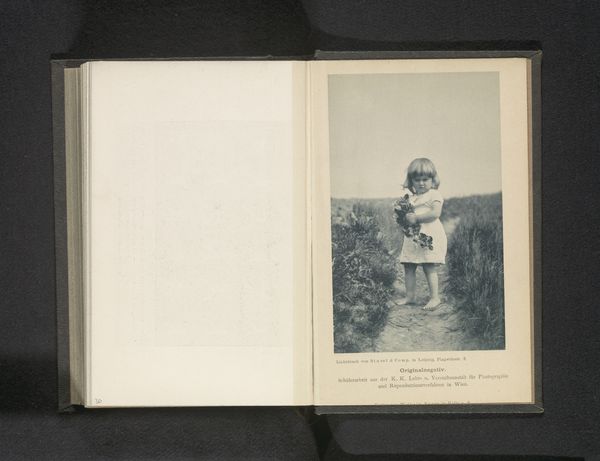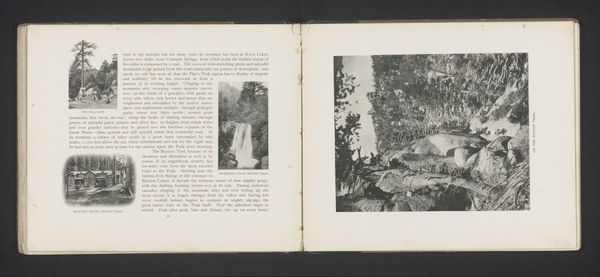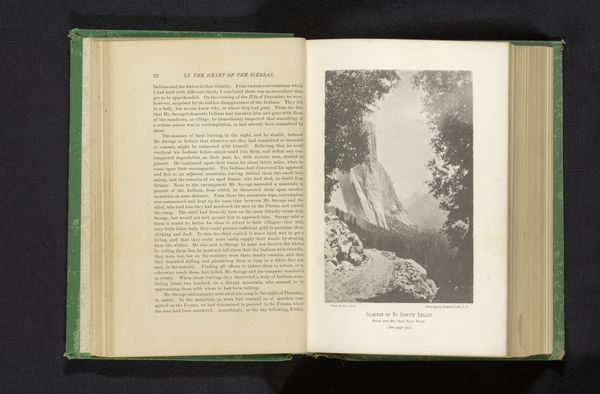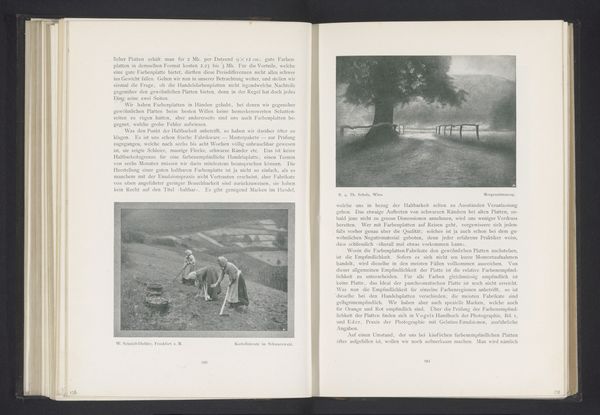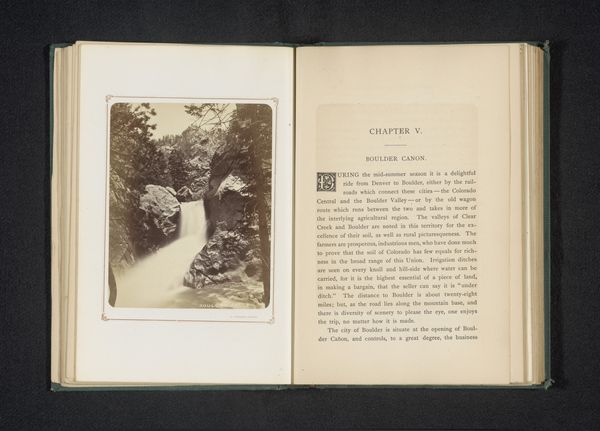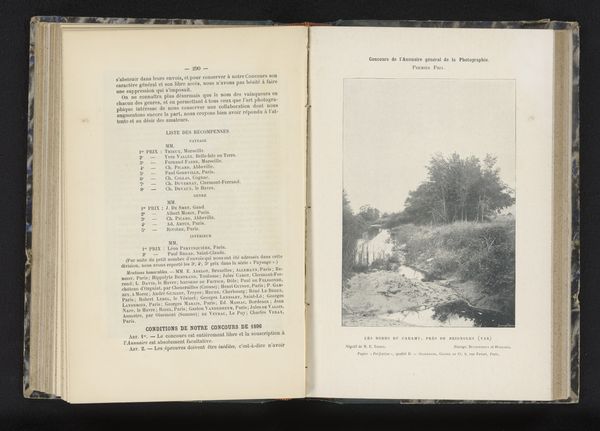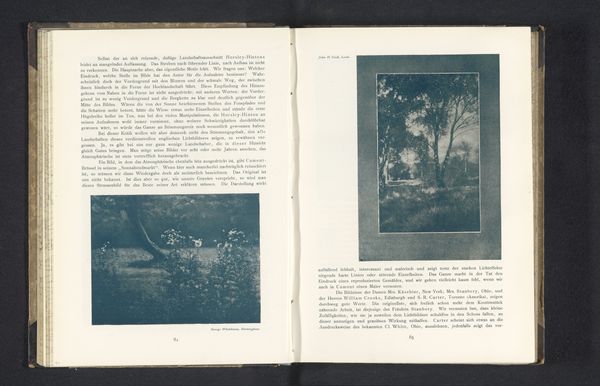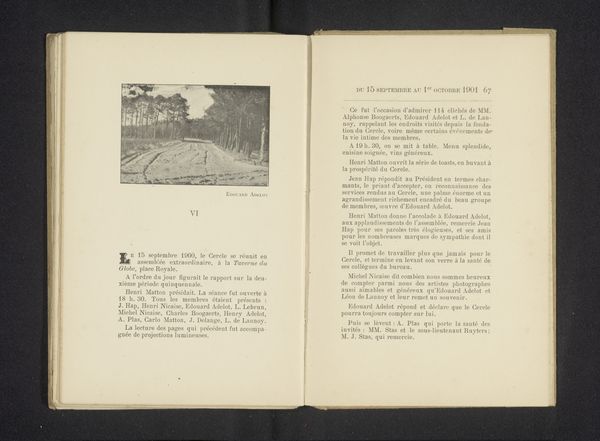
Dimensions: height 77 mm, width 102 mm
Copyright: Rijks Museum: Open Domain
Curator: This photograph, titled "Waterval," which translates to "Waterfall," is attributed to F.W. Hindley, taken before 1894. The medium is listed as a print, indicating a photographic process meant for wider circulation. What are your initial thoughts? Editor: There’s an impressive contrast in textures—the rush of water versus the stillness of the rocks, it seems. The photographic process at play emphasizes these qualities, with the darks and lights adding to the almost overwhelming impression. Curator: Indeed. Early photography like this, reproduced in publications like *The Photogram*, made previously inaccessible landscapes accessible to a wider audience, thus shaping aesthetic trends and national identities tied to landscapes. Editor: I agree. But more than the landscape itself, it's important to consider Hindley’s working methods—the labor in carrying equipment to the location, the materials used in developing the print. This adds to our understanding of how photographs like this helped to form an understanding of nature that involved specific technological advancements. Curator: It also suggests that beyond documentation, we must consider the staged presentation. These images were carefully positioned within a discourse around what constituted ‘artistic’ photography—pushing the medium beyond mere reproduction and more toward self-expression, influencing art institutions' perception and legitimization of photography. Editor: And in turn, creating and driving desires for certain locales—waterfalls in particular—reinforcing the aesthetic value tied to certain geographic features and potentially boosting related industries like tourism. How meta! Curator: Exactly. In closing, exploring "Waterval" enriches our understanding not just of 19th-century photography but its deep, shaping influence on our experience and perception of nature. Editor: This is just another illustration, so to speak, of how seemingly simple landscape images, when examined through production and historical contexts, can speak volumes about art, media, and our intertwined relationships with nature.
Comments
No comments
Be the first to comment and join the conversation on the ultimate creative platform.
